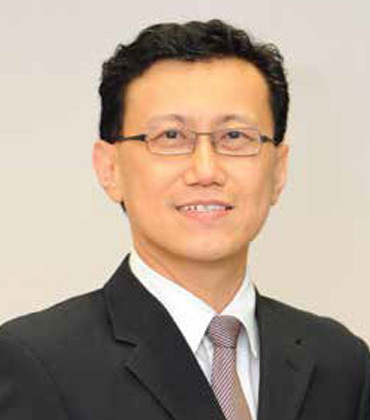THANK YOU FOR SUBSCRIBING
eeasy is a powerful scheduling platform built to handle the messy realities of scheduling, such as coordinating multiple participants, managing room availability, integrating with other platforms like Salesforce, and keeping stakeholders aligned. Whether for a small business, a growing team, or a large enterprise, eeasy’s patented technology automates the entire flow with best-in-class security and flexibility. The platform addresses two chronic pain points: repetitive tasks that consume staff time, such as email correspondence, calendar updates, meeting link creation, and other manual tasks, and the endless back-and-forth that hinders momentum. By handling both, eeasy converts scheduling from friction to a force multiplier. “Clients consistently rate eeasy highly for its ability to support an extensive range of scheduling use cases. Despite being feature-rich, the platform remains remarkably user-friendly and easy to operate,” says Taichiro Sugimoto, founder and CEO of eeasy. The most up-to-date available dates can always be sent as potential interview options, ensuring that interviews are scheduled at the earliest possible date. The result is fewer headaches, tighter coordination, and a calendar that finally keeps pace with the business. Automating Time, Place, and Platform Scheduling is not merely when; it is also where and how. Most scheduling tools focus on time slots, leaving teams to navigate the ‘where’ and ‘how’ through redundant emails and follow-ups. These exchanges accumulate, creating systemic inefficiencies. Common examples include messages like, ‘Is ●● the right place to meet?’ followed by, ‘No, please come to ▲▲,’ or ‘Is Microsoft Teams okay?’ with the reply, ‘I’d prefer Zoom.’ eeasy eliminates this by fully automating the coordination of time, location, and platform. An example is the usual meeting shuffle, which involves finding a time, tracking down a room, and starting over when it is taken. This ends with eeasy’s automatic room assignment. Users flag acceptable spaces; when a slot is confirmed, eeasy scans availability and locks in a room, ensuring no double entry and no do-overs. In room-scarce, high-velocity offices, that single workflow slash removes hours of friction. Back-to-back meetings leave little margin for preparation, travel, or recovery, fueling delays and no-shows. eeasy solves this at the root: set mandatory buffers before or after events, and the platform enforces them automatically. The result is sharper starts, fewer reschedules, and meetings that feel deliberate instead of chaotic.
Wilddan Rosén, Founder and CEO
In factories, airports, farms, and hospitals, much of the work that keeps everything running happens behind the scenes. Hundreds of people move freight, maintain systems, clean wards, inspect equipment, and service the infrastructure others rely on. Managing this workforce means navigating constant movement, rotating shifts, scattered sites, unreliable attendance, and tasks that slip through. Most workforce software was not built for this reality. These systems assume office-based routines, with templates and dashboards designed for desk work and only later patched for the field. Such fixes rarely hold up when communication falters, compliance is missed, and accountability fades, leaving oversight to guesswork. Swipetask was created to address that need. The company offers a workforce management platform designed specifically for jobs in the field. Built from the ground up for mobile teams, it brings attendance, checklists, training, and shift tracking into one system that moves with the work. From healthcare and engineering to agriculture and aviation, Swipetask replaces scattered tools with a single platform that keeps teams aligned without slowing them down. “We did not adapt office software for the field. We built a platform that begins with the worker on the ground,” says Wilddan Rosén, founder and CEO. Solutions Built for the Field Most workers using Swipetask start their day on the move. With one app, they can clock in, follow checklists, receive training reminders, prove on-site presence, and stay connected. Mobile attendance tracking, task-specific checklists, and proof of presence via GPS or NFC are core functions, not add-ons. The platform also includes training modules, shift-based communication, and task performance tracking. Instead of adding layers of reporting and oversight, Swipetask equips frontline workers with tools that improve performance and convert activity into usable data for managers. The result is clear compliance, real-time visibility, less administration, and better service quality. About 75 percent of the platform works out of the box, while the rest is customized with each client. This avoids the slow, complex deployments common to ERP or HR systems. Features like facial recognition for secure sites or offline mode for remote work show how the platform adapts to clients, not the reverse. Deployment is also fast, taking weeks, not quarters. Unlike SaaS providers that scale through rigid templates, Swipetask emphasizes fit and long-term use. Customers value both the speed and the company’s humility in tailoring solutions to real processes and broader needs.

Luigi Bellopede, VP Human Resources ASIA PACIFIC, Prysmian Group

Irma Aure, Vice President, Head of Human Resources, CEMEX

Ernest Phang, Head of Corporate Services, Group Human Resources, OCBC Bank

Tom Browne, Director, Talent Acquisition, Pandora

Liu Shu, HR Business Partner, Jaguar Land Rover China

Chris Major, Global Talent Acquisition Director, Siegwerk

Joy Noree Maramba, Head of Talent Management, CDO Foodsphere, Inc
Where Automation Finds Balance with Workforce Harmony
From bustling retail hubs to round-the-clock manufacturing plants across the APAC region, the question has shifted from who works where and when to how intelligently the schedule itself adapts. Automated scheduling and workforce management platforms are emerging as the silent backbone of productivity, aligning labor, demand and compliance in real-time. These systems go far beyond static calendars. AI engines forecast workload fluctuations, map employee availability and match shifts with skills, certifications or fatigue limits. Cloud dashboards update minute by minute as managers approve requests, automate replacements or adjust coverage. For the worker, it means clarity and predictability; for the enterprise, a schedule that breathes with the rhythm of its operations. In markets such as Singapore, Australia and Japan, where labor costs are rising and flexible work is gaining policy support, adoption is accelerating. The manufacturing and service sectors are digitalizing shift planning to offset labor shortages, while emerging economies in Southeast Asia are utilizing mobile-based scheduling to unify large, distributed workforces. The numbers mirror this transformation. The global workforce management market is projected to reach $22.4 billion by 2030, with APAC recording one of the fastest growth rates. The magazine features a thought-provoking article by Joy Noree Maramba, Head of Talent Management at CDO Foodsphere, Inc., highlighting how modern organizations can strengthen their people strategies amid rapid technological, economic, and social change. Additionally, an article by Tom Browne, Director of Talent Acquisition at Pandora, discusses the balance between technology and human connection in talent acquisition, particularly in markets that vary significantly in digital readiness, cultural expectations and regulatory complexity. We hope this edition offers insights that help business leaders and workforce innovators navigate change, strengthen operational agility and stay prepared for what’s next in a region where automation, data intelligence and cloud-driven scheduling are redefining the future of productivity, performance and people management across the Asia- Pacific.